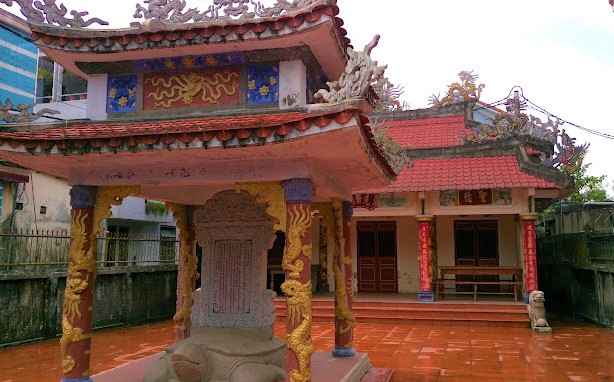Under the Nguyen Dynasty, Tien Y Temple was one of the shrines of special importance. The temple is ranked in the ranks of the masses, every year there are third rank mandarin and the Thai Medical Institute comes to do the ritual.
According to the "Đại Nam Nhất Thống Chí" in 1909, the National History of Duy Tan Dynasty recorded about Tien Y Temple as follows: "In Thuong Du ward on the left side in the citadel, the 6th year of Minh Mang (1825) was built on the left side of Thien Mu pagoda, the 2nd year of Tu Duc (1849) moved here. It is the main building of 3 compartments 2 wings, worshiping Phuc Hy, Than Nong, the Emperor and the Medical Prophets. In two important months of spring and autumn, Medical Institute came to hold the ritual. Year Thanh Thai 15 (1903) built two more houses on the left and right” (Translation by Tu Trai Nguyen Tao, page 45)(1)
Tien Y Temple in the time of Tu Duc, worshipped a total of 40 tablets, including two tablets about the country's doctors, the tablets about the previous medical names of Vietnam, and the tablets about the previous medical names of Nguyen dynasty. Thus, along with Van Mieu, Vo Mieu, Y Mieu were also important cultural institutions of the Nguyen Dynasty.
After the end of the Nguyen Dynasty, the temple was abandoned until 1991, the local elders voluntarily contributed to the construction of a small three-room shrine made of reinforced cement with a length of 3,5 m, a width of 1,1 m and a height of 2,3 m.
In 2002, the People's Committee of Thua Thien Hue province allocated funds for restoration and renovation. Although it has been changed architecturally (Tien Y Temple was rebuilt spaciously in the style of Hue's traditional shrine on an area of 300m2), Tien Y Temple is still located in the old location and still retains its function (place of worship of the Divine Healer and Doctors) as under the Nguyen Dynasty.

In recent years, the Council of Oriental Medicine of Thua Thien Hue has embellished the temple and set up more tablets of Hai Thuong Lan Ong Le Huu Trac and Tue Tinh Zen masters, two famous doctors of the country, and restored the Vietnamese medical ceremony and commemorate the death of Hai Thuong Lan Ong at Tien Y temple on the occasion of the full moon of January, to commemorate the Vietnamese doctors and consider this is also a traditional holiday of Oriental Medicine.